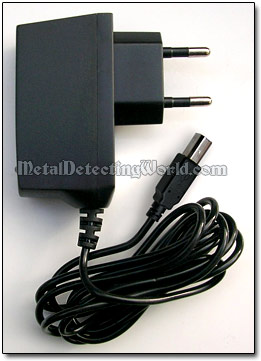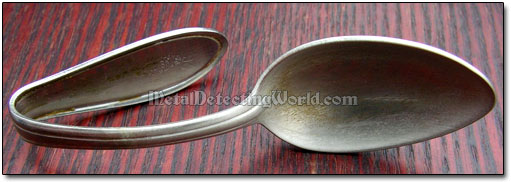How To Clean Coins and Jewelry with Electrolysis - A Detailed Tutorial, page 4
2. How To Make a Simple Electrolysis Machine for Cleaning Coins
1) COIN ELECTROLYSIS MACHINE of "CLASSIC" TYPE
The electrolytic cleaner of a Classic Type is simple and easy to make at home. To build an inexpensive device which will do a splendid job of cleaning coins or other small non-ferrous artifacts, you need the following components, tools and materials:
• DC Power Supply
A direct current (DC) power supply provides the energy necessary to create or discharge the ions in the electrolyte. Unlike the electrolytic rust removal, the coin cleaning with electrolysis requires less electric current to get the job done. In this case, a common AC/DC 12V adapter will be sufficient.
By its capabilities and design, the AC/DC 12V adapter (often called an AC/DC converter) is associated with a general low-current range and is capable of cleaning only small objects (coins, buttons and jewelry). This is the same electrical device which plugs into an electrical wall outlet and lets you operate the AA and AAA battery chargers, portable radios, CD and MP3 players, and so forth, without using batteries.
AC/DC 12V Adapter

 WARNING: Do not use "Wall Current", "House Current", or any type of AC mains current for electrolysis under any circumstances! Attempting to do so can be fatal. And electrolysis will not work with AC current anyway.
WARNING: Do not use "Wall Current", "House Current", or any type of AC mains current for electrolysis under any circumstances! Attempting to do so can be fatal. And electrolysis will not work with AC current anyway.
A different DC power supply - a regular 12V/24V Car Battery Charger, is used for the "Pipe" type electrolytic coin cleaner and discussed on page 12 of this tutorial, and described in more details on page 8 of the "Electrolytic Rust Removal" tutorial.
• Anode - Sacrificial Positive Electrode
In electrolysis, an electrode connected to the AC/DC adapter's positive terminal is called ANODE. The anode is also called "sacrificial" or "waste" electrode because it can be expected to disintegrate and visibly decrease in size during the process. The choice of a conductive object to be used as an anode in electrolysis should be considered carefully.
Using copper as the anode for cleaning a silver coin electrolytically is a recipe for disaster. The copper will disintegrate and enter the solution, turning it blue. And then it will plate onto the silver coin being cleaned! So you will end up with a copper plated silver coin instead of a clean shiny piece. For a positive electrode, you should use a metal that will not disintegrate, like platinum, or a metal or material that once disintegrated will not plate onto the silver, like stainless steel, aluminum or graphite.
A bent stainless steel spoon is probably the best item to be used as the anode in the coin electrolysis setup of the Classic Type. A piece of a stainless pipe is used for the "Pipe Type" Electrolytic Coin Cleaner and shown on page 12 of this tutorial.
Bend a handle of the stainless steel spoon into a sharp "V" shape so that, when hung over the lip of the glass jar, the "bowl" of the spoon can reach about half way deep into the electrolyte.
"Sacrificial" or "Waste" Positive Electrode - Anode

Just keep in mind that stainless steel (contains ≥10.5% chromium) is corrosion-resistant due to high chromium content and does not visibly deteriorate during electrolysis. However, it slowly dissolves chromium into the electrolyte producing two chromium compounds: trivalent chromium and hexavalent chromium. While trivalent chromium is relatively harmless, hexavalent chromium is toxic, carcinogenic and poisonous.
As for the CATHODE, a coin to be cleaned will be the cathode, so you only need to make a cathode connecting set.